For both Israel and Hamas, the truce is a tactical ploy, not a strategic one.
After persistent efforts from all sides and delays, the 4-day ceasefire and hostage release agreement came into effect on November 24. The Palestinian people, Israel, the United Nations and the international community were temporarily relieved after a period of holding their breath and anxiety. However, many problems and questions still lingered in their hearts.
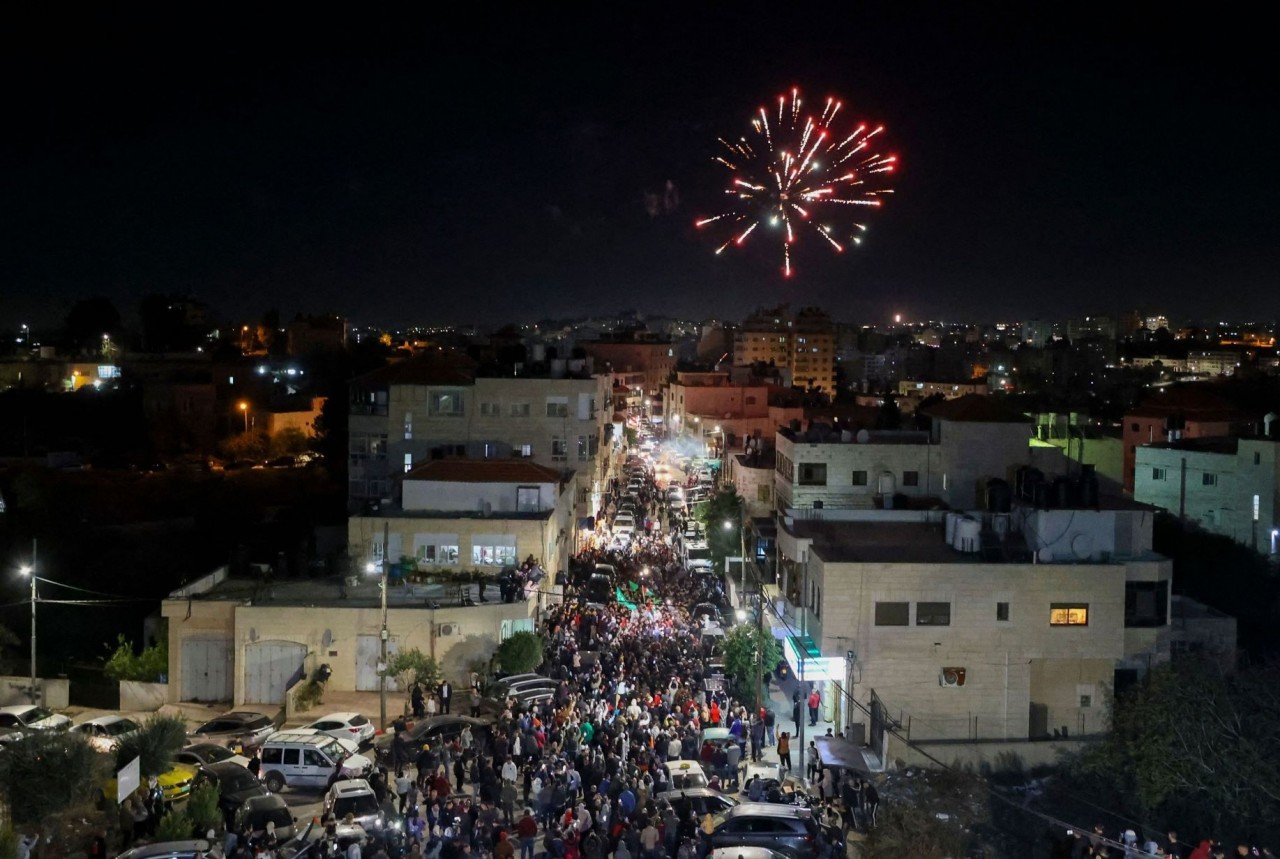 |
| Fireworks light up the sky as Palestinian prisoners released from Israel's Ofer military facility parade in Beitunia on November 24. (Source: AFP) |
Don't want to but have to compromise
It is obvious that both Israel and Hamas accepted the ceasefire because of the forced situation. Demands for the rescue of hostages increased sharply in Israel and the countries whose citizens were held. The loss of life reached tens of thousands, including many women and children, making it impossible for the international community, even the West, to ignore.
Along with the international community, the US and many Western countries have also called for a ceasefire, in the context of the rapidly increasing number of civilian deaths and the terrible humanitarian disaster in the Gaza Strip. The US and the West will be seen as biased, making it difficult to talk to Arab countries, the international community and even their own people. Their international role and influence will more or less decline.
Pressure from both inside and outside weighed heavily on the government of Prime Minister Benjamin Netanyahu. Rejecting all proposals for a ceasefire would cost Israel more than it gained. The four-day ceasefire, in exchange for the release of hostages, was seen as a move to relieve pressure, reduce international unfavorable views and Israeli people's concerns and opposition to violence.
The return of the hostages caused Hamas to lose an “important weapon”. In return, they will have the necessary time to consolidate their position, adjust their force deployment, logistics and technical facilities, overcome the recent huge losses, and prepare to switch to long-term operations in the style of guerrilla warfare. Moreover, it is also a move to prove that Hamas can negotiate; to gain more international support, especially from countries with hostages.
For both Israel and Hamas, the truce is a tactical ploy, not a strategic policy.
Too fragile. Why?
More or less, the international community has something to be satisfied with. Time is short but precious to provide humanitarian assistance, to lessen the guilt of division and helplessness in the face of world violence. The ceasefire agreement also suggests some hope, however vague.
But the general feeling remains one of fragility and apprehension. Even a short-lived agreement may fall apart, or not bring any significant value, because of the strategic calculations and actions of one or both parties.
Prime Minister Benjamin Netanyahu did not hesitate to declare that he would resume the offensive as soon as the ceasefire agreement expired. For the Netanyahu government, this is an opportunity to go all-in, eliminate Hamas, control the Gaza Strip, and create a great advantage for Israel in all future solutions. Israel will only accept it when its basic goals are achieved.
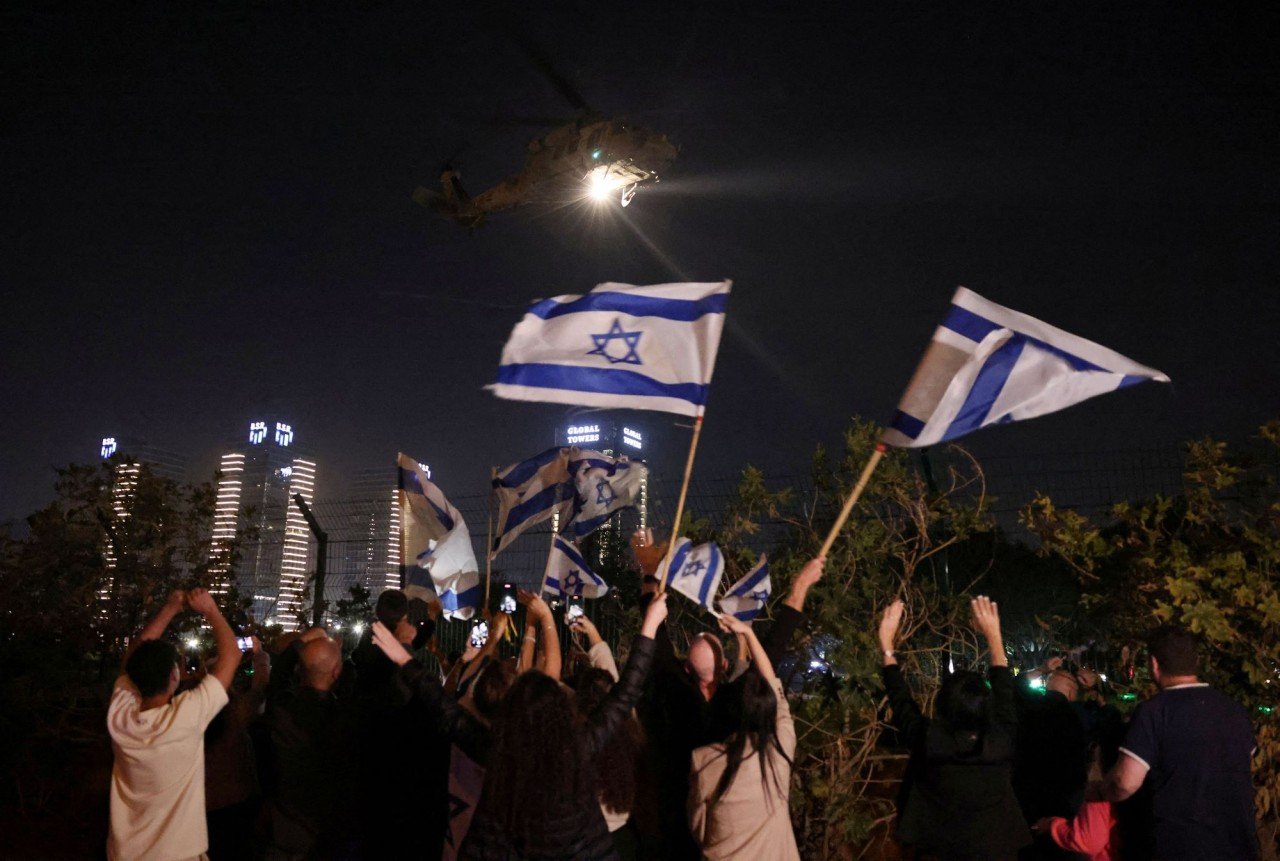 |
| People wave Israeli flags as a helicopter carrying hostages released by Hamas arrives at the Schneider Children's Medical Center in Petah Tikva on November 24. (Source: Reuters) |
There is public opinion that Hamas made a strategic mistake, leading to the outbreak of conflict, heavy losses, and great damage to the Palestinian people. But Hamas also has reasons to act. Political, diplomatic, and legal measures have proven ineffective for a long time. The Palestinian people are still living in a state of oppression in all ways, and the hope of having an official state is increasingly distant. Hamas believes that they have no other way.
Hamas does not think it can defeat Israel. But it believes it can destabilize Israel, motivating its people to take action for a lasting peaceful life. It is also a way to remind Arab countries and the international community not to forget the Palestinian issue. For that purpose, the price to pay is worth the trade-off!
Some Palestinians do not want to follow the path of violence, but many are so desperate that they respond and support Hamas. Therefore, Hamas leaders believe that there is still a “place” to continue fighting.
The feeling of fragility and apprehension also comes from the division of the international community and the strategic calculations and geopolitical interests of many countries, especially major countries in the Middle East.
It is obvious that the US and the West have a “double standard” regarding the conflict in the Gaza Strip. They strongly condemn Hamas for causing the deaths of Israelis, but do not take corresponding action when Israel goes beyond the scope of retaliation, causing many times more casualties; forcing Palestinians to flee their homeland.
The majority of the international community supports a ceasefire and the search for a peaceful solution to the Palestinian issue. However, apart from opposing violence, the world has not had any effective tools and has not created enough pressure to force the conflicting parties to de-escalate.
A temporary ceasefire and hostage exchange are the most necessary and feasible options in the current context. However, the combination of the above factors shows that the ceasefire agreement does not have much practical effect and cannot create a breakthrough or new change for a long-term solution to the Palestinian issue.
Where is the war going?
When the ceasefire period ends, the following main scenarios and situations may occur:
One, the war continues, no less fierce. Until Hamas is basically wiped out, forced to flee to other areas, reducing its ability to attack; Israel controls the Gaza Strip. In fact, Israel has many advantages but it is difficult to completely wipe out Hamas.
Hamas will switch to guerrilla operations in the Gaza Strip and some other areas; restore its forces, seek more support from outside, and reserve action when the opportunity and conditions arise.
The basic contradictions remain unchanged. The conflict sometimes subsides, sometimes flares up. It is even more complicated by the direct and stronger involvement of Hezbollah, Houthi and other factors.
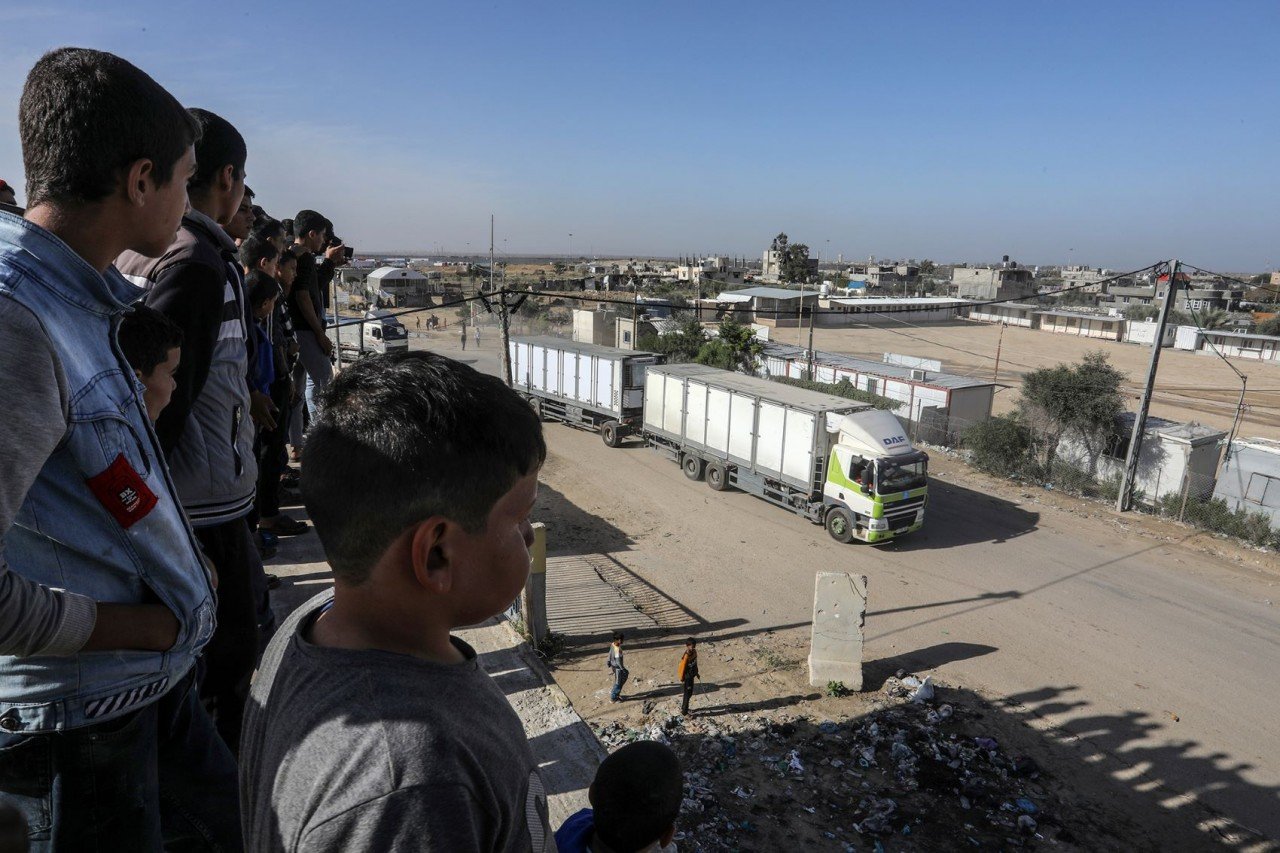 |
| Trucks carrying humanitarian aid enter Gaza through the Rafah border crossing on November 24. (Source: AP) |
Second, the ceasefire agreement could be extended for a few more days if Hamas agrees to release more hostages. This scenario could happen if Hamas needs more time to consolidate; Israel cannot eliminate Hamas; and pressure to release the hostages increases. Both Israel and Hamas believe that neither side will take advantage of the ceasefire to take military action, causing unexpected damage to the other side.
This is the most likely scenario, the most likely situation in the current context. Although it does not fundamentally resolve the situation, it also reduces losses and tension, creates a necessary space of silence and environment to hopefully seek a long-term ceasefire solution, with international supervision.
Third, gradually implement the two-state solution of peaceful coexistence. This is the fundamental, long-term solution for Israel, Palestine and the Middle East region. However, this solution is very difficult and complicated, must go through many steps and stages, and requires great efforts from all parties.
First of all, there must be more ceasefires, moving towards a long-term ceasefire. The parties accept the presence of an international peacekeeping force, or even a temporary intermediary structure to manage the Gaza Strip, monitor the ceasefire, and limit the outbreak of conflicts. On that basis, negotiations can be held to find a fundamental, long-term solution, towards the coexistence of the state of Israel and Palestine.
For the solution to become a reality, first of all, leaders of parties and organizations in Israel and Palestine must accept new thinking, overcome themselves, and consider between short-term and long-term interests.
People of each country, through votes and movements, express their opinions, creating strong pressure on the government and leaders of political and military organizations.
Countries, especially big countries, need to have a more balanced and harmonious stance, avoid "double standards" and leaning to one side; and not take advantage of the Palestine issue to calculate national interests.
The United Nations and Arab countries need to make more efforts, be more effective, promote their roles and responsibilities, act as mediators, and bridges for Israel, Palestine, and Hamas to meet and dialogue.
On November 21, leaders of the BRICS group of emerging economies held an expanded online summit on the Israel-Hamas conflict. Although they did not issue a joint statement, BRICS affirmed that political and diplomatic measures are a fair and long-term solution to the Palestinian issue.
The fact that BRICS has gone beyond the economic and trade priorities to contribute to finding peaceful solutions to conflicts is a welcome sign. With the organization’s growing status and its members having relations with parties such as China, India, Brazil, etc., it is hoped that it will have a certain impact.
Source


![[Photo] Keep your warehouse safe in all situations](https://vphoto.vietnam.vn/thumb/1200x675/vietnam/resource/IMAGE/2025/10/1/3eb4eceafe68497989865e7faa4e4d0e)



![[Photo] Hanoi morning of October 1: Prolonged flooding, people wade to work](https://vphoto.vietnam.vn/thumb/1200x675/vietnam/resource/IMAGE/2025/10/1/189be28938e3493fa26b2938efa2059e)
![[Photo] President of the Cuban National Assembly visits President Ho Chi Minh's Mausoleum](https://vphoto.vietnam.vn/thumb/1200x675/vietnam/resource/IMAGE/2025/10/1/39f1142310fc4dae9e3de4fcc9ac2ed0)
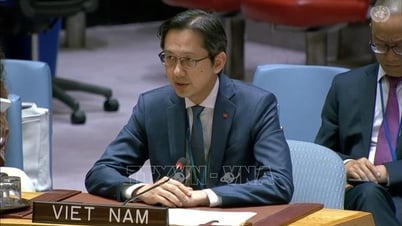


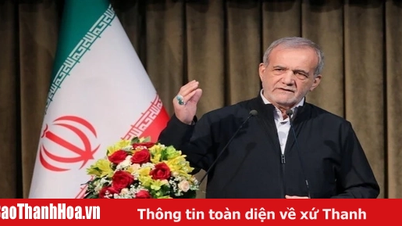




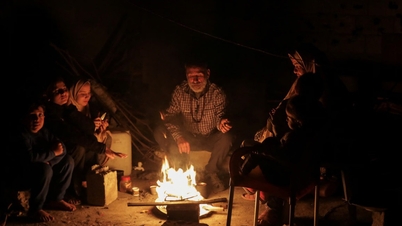


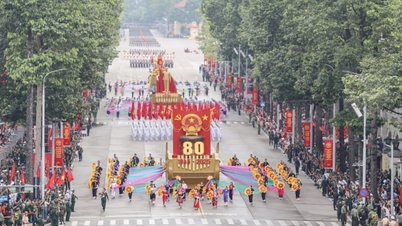







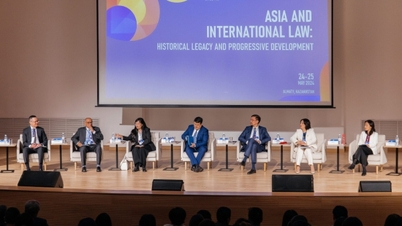
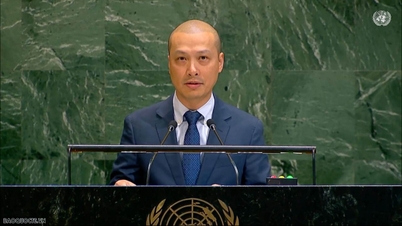
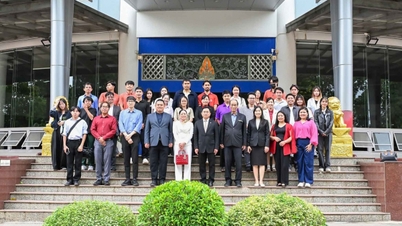

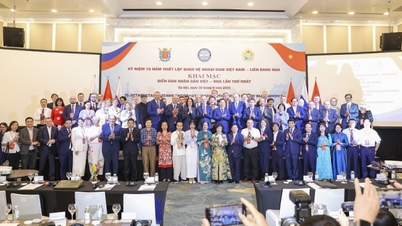


















































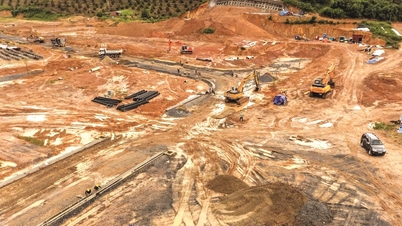














Comment (0)